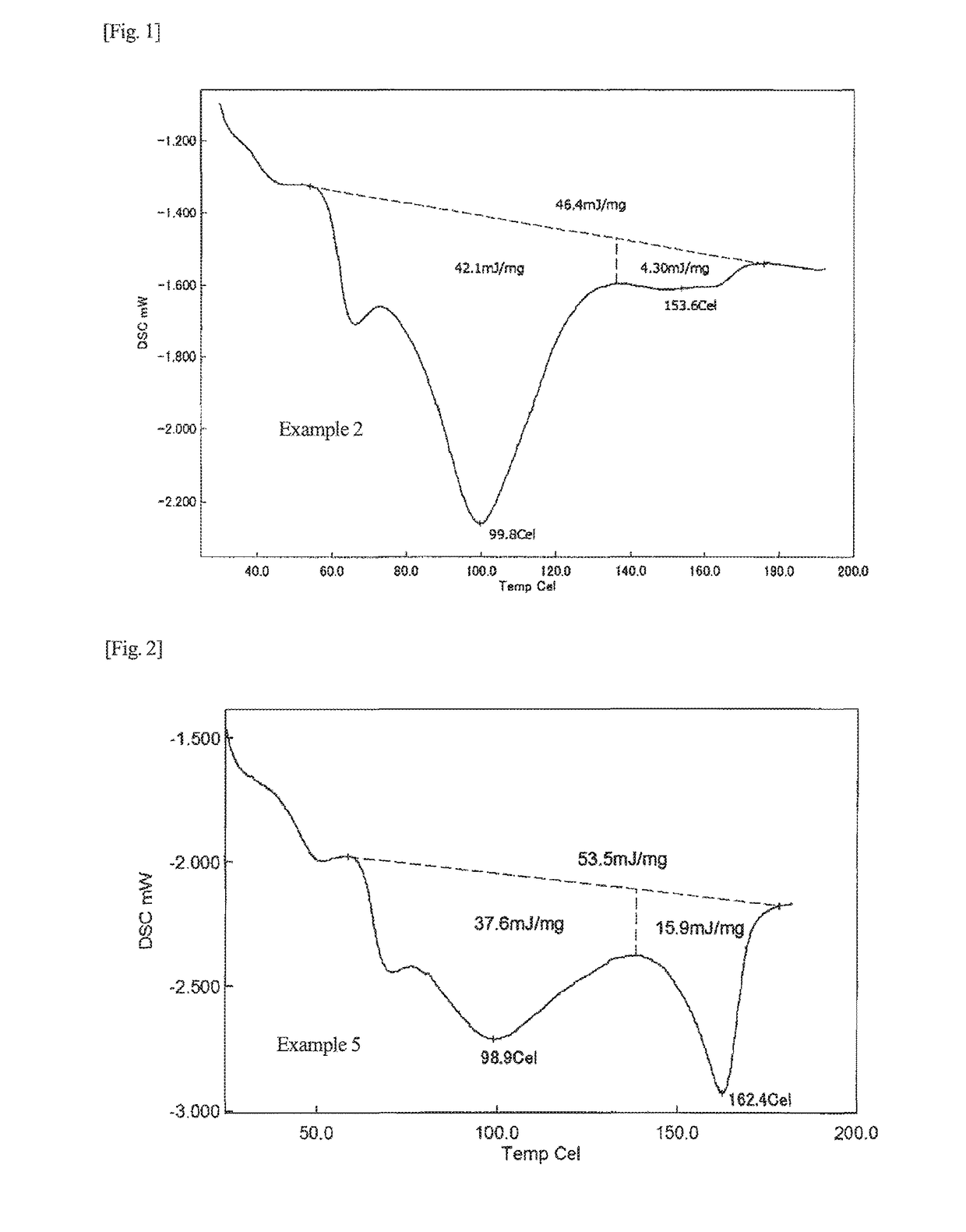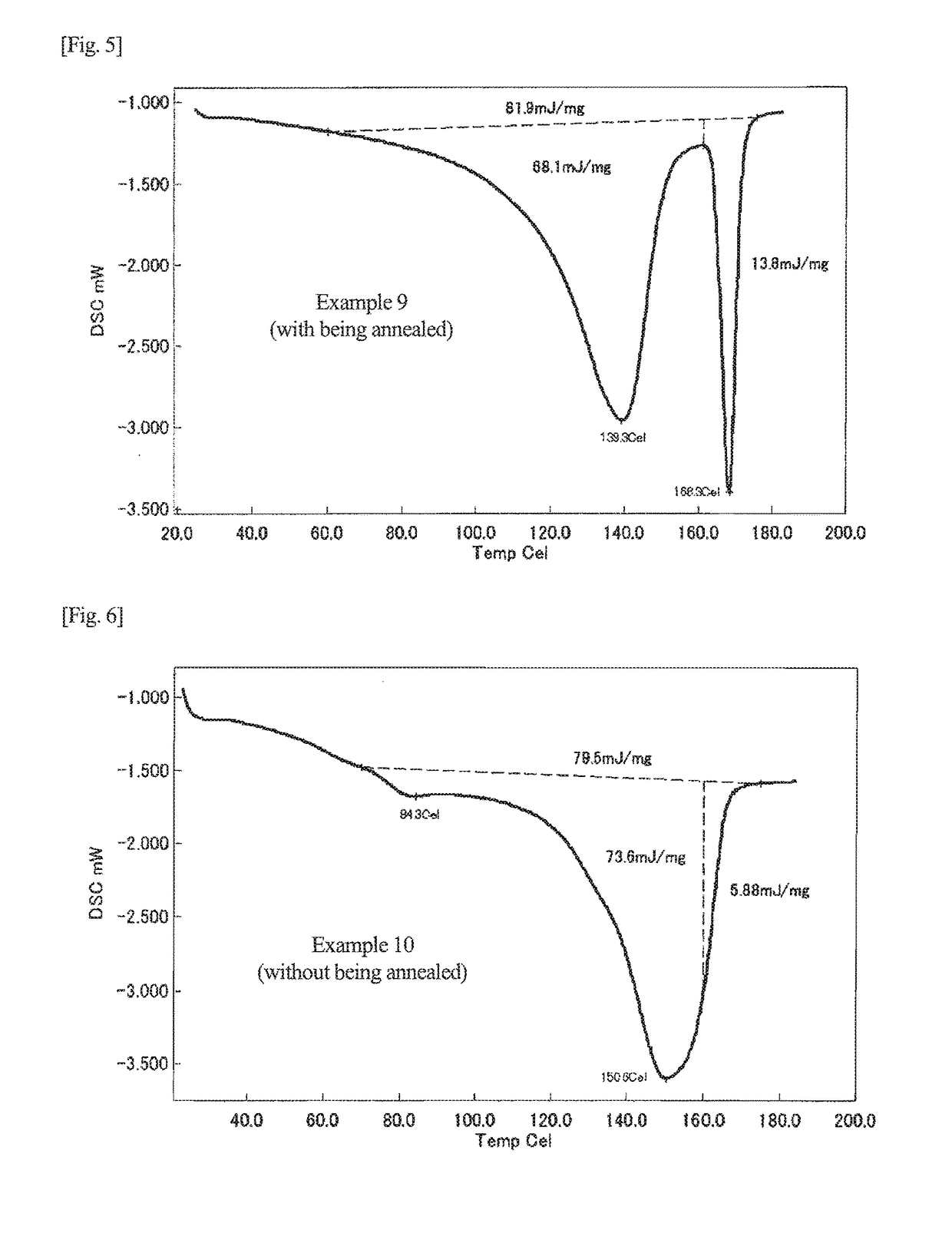Microorganism having multiple genes encoding pha synthase and method for producing pha using same
a technology of pha synthase and microorganisms, which is applied in the field of microorganisms, can solve the problems of low workability of resin, limited practical use scope, and serious social problems of synthetic plastics, and achieve the effect of improving the melt workability or working improving the crystallization speed of pha copolymer
- Summary
- Abstract
- Description
- Claims
- Application Information
AI Technical Summary
Benefits of technology
Problems solved by technology
Method used
Image
Examples
production example 1
Production of KNK-005 ΔphaZ1,2,6 Strain
[0090]First, in order to disrupt phaZ6 gene, a plasmid for gene-substitution was produced. A genomic DNA of C. necator H16 strain was used as a template to conduct PCR using respective DNAs represented by SEQ ID NOs: 20 and 21 as primers. As a polymerase therefor, a polymerase KOD-plus (manufactured by Toyobo Co., Ltd.) was used. In the same way, PCR was conducted, using respective DNAs represented by SEQ ID NOs: 22 and 23 as primers. Furthermore, the two DNA fragments obtained by the PCR were used as templates to conduct PCR, using respective DNAs represented by SEQ ID NOs: 20 and 23 as primers. The resultant DNA fragment was digested with restriction enzyme SmiI. This DNA fragment was ligated with a DNA fragment obtained by digesting a vector pNS2X-sacB described in JP 2007-259708 A with SmiI, using a DNA ligase (Ligation High, manufactured by Toyobo Co., Ltd.) to produce a gene-disrupting plasmid pNS2X-phaZ6(−+) having upstream and downstrea...
production example 2
Production of KNK-005 REP-phaJ4bΔphaZ1,2,6 Strain
[0097]Furthermore, in order to insert an expression regulatory sequence for enhancing the expression of a phaJ4b gene into an upstream of the phaJ4b gene on any chromosome, a plasmid for expression regulatory sequence insertion was produced. A genomic DNA of C. necator H16 strain was used as a template to conduct PCR using respective DNAs represented by SEQ ID NOs: 32 and 33 as primers. As a polymerase therefor, the above-specified KOD-plus was used. In the same way, PCR was conducted, using respective DNAs represented by SEQ ID NOs: 34 and 35 as primers. Furthermore, in the same way, PCR was conducted, using respective DNAs represented by SEQ ID NOs: 36 and 37 as primers. The three DNA fragments obtained by these PCR were used as templates to conduct PCR, using respective DNAs represented by SEQ ID NOs: 32 and 35 as primers. The resultant DNA fragment was digested with SmiI. This DNA fragment was ligated with a DNA fragment obtained ...
production example 3
Production of PHB-Producing Plasmid pCUP2-REP-phaCRe
[0099]A PHB-producing plasmid pCUP2-REP-phaCRe was produced for being introduced into the KNK-005 REP-phaJ4bΔphaZ1,2,6 strain produced in Production Example 2.
[0100]First, a genomic DNA of C. necator H16 strain was used as a template to conduct PCR using respective DNAs represented by SEQ ID NOs: 38 and 39 as primers. The resultant DNA fragment was digested with EcoRI and SpeI. As a polymerase therefor, the above-specified KOD-plus was used. This DNA fragment was ligated with a DNA fragment obtained by digesting a pCUP2 vector described in JP 2007-259708 A with MunI and SpeI using the above-specified DNA ligase to produce the captioned PHB-producing plasmid pCUP2-REP-phaCRe having an expression regulatory sequence made of a phaC1 promoter and a phaC1SD sequence, and a phaCRe structural gene sequence.
PUM
| Property | Measurement | Unit |
|---|---|---|
| Temperature | aaaaa | aaaaa |
| Temperature | aaaaa | aaaaa |
| Temperature | aaaaa | aaaaa |
Abstract
Description
Claims
Application Information
 Login to View More
Login to View More - R&D
- Intellectual Property
- Life Sciences
- Materials
- Tech Scout
- Unparalleled Data Quality
- Higher Quality Content
- 60% Fewer Hallucinations
Browse by: Latest US Patents, China's latest patents, Technical Efficacy Thesaurus, Application Domain, Technology Topic, Popular Technical Reports.
© 2025 PatSnap. All rights reserved.Legal|Privacy policy|Modern Slavery Act Transparency Statement|Sitemap|About US| Contact US: help@patsnap.com



